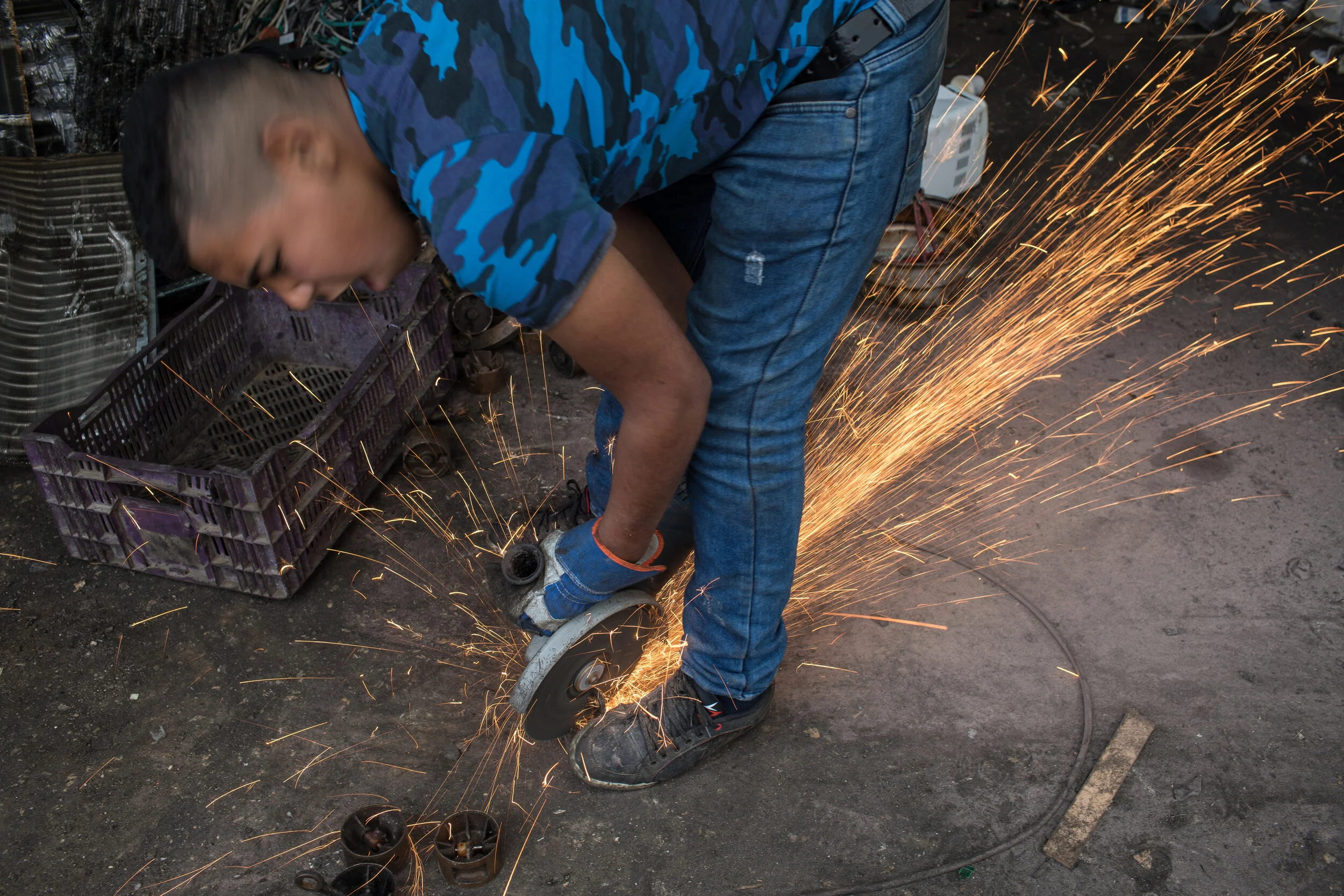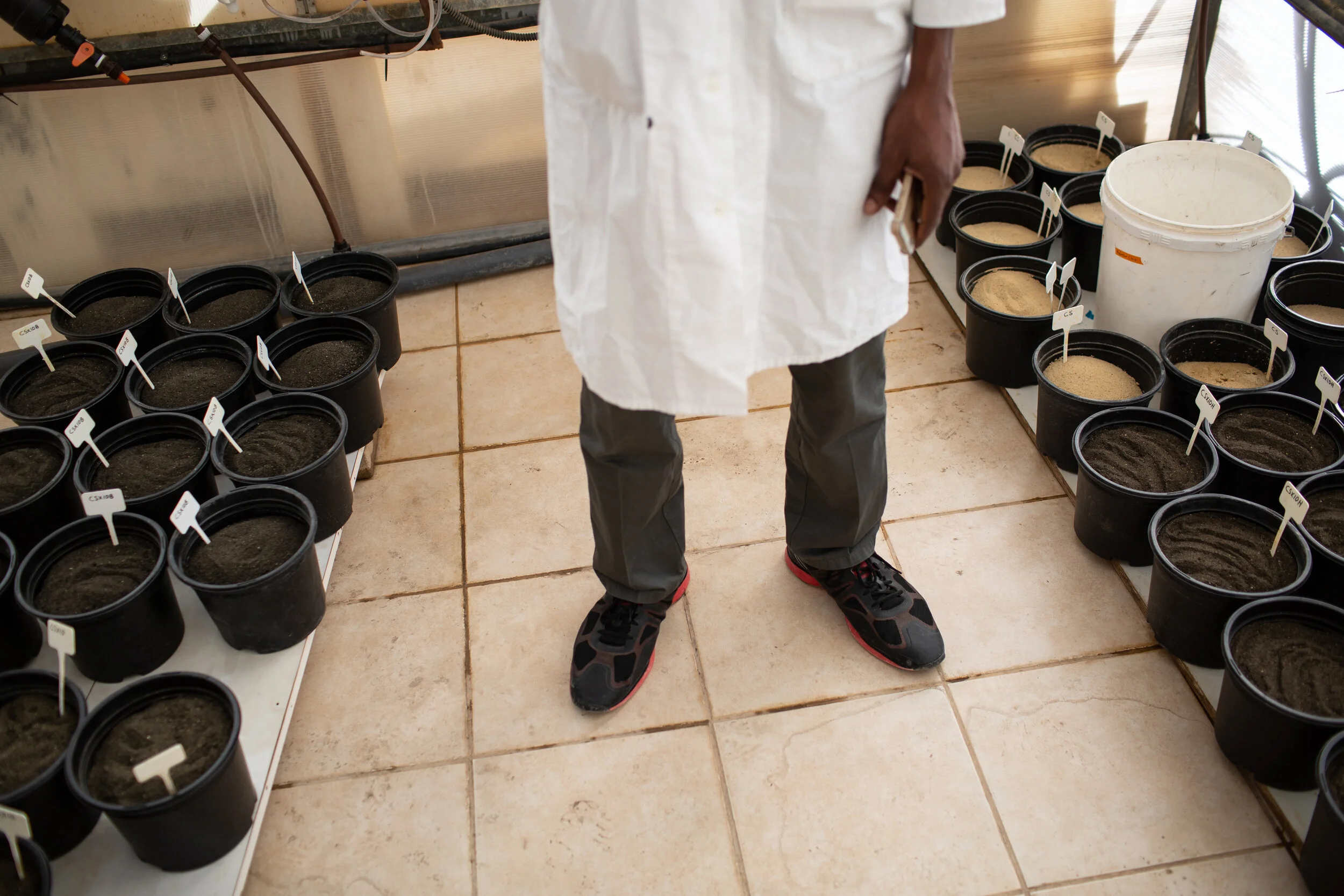The Toxic Trash That Is Poisoning the West Bank
BEIT AWWA, West Bank — Maysoon Sweity remembers a time before the fires, when she and her family would lie on the roof of their home here and fall asleep counting the stars.
On a Friday morning in April, Ms. Sweity, a 54-year-old schoolteacher and mother of six, stood on the same roof, watching a column of dark smoke spiral into the sky. Less than a mile away, tires and scraps from discarded refrigerators burned at the base of the concrete wall separating her Palestinian village from Israel.
“When I see that, I see death,” she said. “Everyone is sick, and I know that one day I’ll be sick too.”
In the early 2000s Israel limited Palestinian access from the territories and built a wall in the West Bank in response to the violence of the Second Intifada. This left Palestinians, who had previously worked in Israel, without jobs. The need for employment alternatives coincided with a sharp rise in commodity prices and the appearance of electronics in the waste stream.
An estimated 20 percent of the world’s 50 million tons of e-waste is recycled. The rest is burned or traded by the world’s poorest. In the Hebron region of the West Bank, processing Israeli electronic waste has become a lucrative, if illegal, industry.
Every morning, Palestinians driving flatbed trucks leave villages like Beit Awwa, Deir Sammit and Idna for Israeli towns and cities, and return with broken computers, appliances, and obsolete medical equipment, among other things.
Other Palestinian traders buy high-value items like electrical cables pulled from demolished buildings and smuggle them, along with other bulk e-waste, into the territory. Israeli trash becomes Palestinian treasure.
Research by Yaakov Garb, an environmental scientist at Israel’s Ben-Gurion University, and John-Michael Davis, then a Canadian doctoral student, showed that in area villages with a population of about 35,000, an estimated 80 percent of households rely directly or indirectly on handling electronic waste, which adds over $28.5 million to the gross domestic product annually.
The majority arrives in scrapyards, where workers wield hammers, saws and blowtorches to dismantle the items and extract every ounce of metal for local and international resale. Self-taught technicians refurbish consumer electronics to sell at a nearby market. In front yards and living rooms, villagers pick apart scraps for a few shekels worth of copper.
Then there are the “burners,” workers who specialize in burning insulated cables, often the hardest items to recycle because of their small size and abundance.
While burning has provided crucial income for some, it has also upended the lives of Palestinians already struggling with the difficulties of living under the occupation. On the villages’ outskirts and along the separation wall — where Israeli and Palestinian security is largely absent — the burning of cables, useless e-waste scraps and trash have blackened the soil and saturated once fertile pastures with what Dr. Garb calls a “witches’ brew” of contaminants.
Villagers speak of black rain, shepherds say they are losing their sheep at an alarming rate, and Israeli communities on the other side of the wall have raised concerns about exposure.
The possible health effects from a legacy of burning — and inhaling toxic smoke — are now coming into focus. Dr. Garb and Dr. Davis found a strong correlation between a cluster of childhood lymphoma cases and proximity to burn sites. Dr. Garb and a Palestinian master’s student also discovered elevated lead levels, identified as a cause for neurological and behavioral issues, among children in the villages.
After years of dialogue between Dr. Garb, Dr. Davis, and community members, a clear consensus emerged: Instead of eliminating the industry, transform it to preserve livelihoods and build a capacity for clean recycling.
While the Israeli and Palestinian governments struggled to address the issue, the team forged a coalition on both sides of territory’s border to find a path forward that was “of, by and for Palestinians.”
With support from the Swedish International Development Cooperation Agency, they organized a pilot program in 2016 that included an education campaign, local enforcement of a burn ban, and arranging for a recycling center in Idna that separates the valuable metals from the plastic through grinding, eliminating the need to burn the plastic off the cables. A plan for cleaning up contaminated sites was negotiated with Israeli environmental authorities.
Their efforts paid off. In 2017, a major reduction in burning let Israelis and Palestinians enjoy a nearly smoke-free summer. The Swedish agency was prepared to commit $3 million to continue the program.
But then political hurdles arose. The Palestinian Environmental Quality Authority insisted the program and its coordination be overseen by their agency rather than be carried out by the local municipalities.
Without control over their borders, Palestinian officials did not authorize the transfer of contaminated soil to Israel’s main hazardous waste facility. Additionally, Palestinian environmental law prohibits the import of used electronics, thus eliminating the potential for a transition to a formalized recycling sector.
Separately, funding from the United States State Department for a health and environmental risk assessment was cut this year, in the wake of the passage of an American law that subjects foreign entities that accept American aid to the jurisdiction of American courts over terrorism-related lawsuits. Rather than risk liability for payouts to Palestinian terrorists, the Palestinian Authority rejected all American aid, halting millions in funding to projects in the territories.
Dr. Garb and the community are now searching for alternative strategies for reducing the burning. “The mayors of these towns and the people in these towns and I, we can’t wait for our respective governments to get into gear and do the right thing,” he said.
Without the pilot program, the burns have resumed, leaving these communities feeling frustrated.
Sarah Awadi, a local leader, is disappointed in the Israeli, Palestinian and foreign institutions that she feels have let her community down.
“The smoke does not distinguish between the Palestinian and the Israeli sky,” she said. “The effect of a contaminated environment does not have borders.”





















